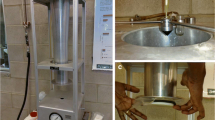Summary
Blowfly larvae damage to drying hides during the rainy season was proving a serious setback to an emergent export trade. Exclusion of invading adults was not a feasible proposition therefore the inclusion of a larvicidal dip into the pre-drying procedure was considered. Two series of trials are described in which three candidate materials, i.e. dieldrin, fenitrothion and dimethoate were assessed for larval toxicity following which four concentrations of the material of choice, dimethoate, were compared. At0.03 per cent, the lowest concentration used, complete control of developing larvae was achieved and damage to hides in the form of ‘hair slip’ was eliminated at very low cost.
Résumé
Les dégats causés par les larves sur les peaux en train de sécher durant la saison des pluies ont provoqué une sérieuse chute le commerce d’exportation.
Comme il n’était pas possible d’éviter la présence des mouches adultes, on a envisagé d’ajouter un bain larvicide avant le séchage.
Deux séries d’essais sont décrits dans lesquels on compare trois produits: la dieldrine, le fenitrothion et le diméthoate par suite de leur toxicité larvaire.
A la suite de ces essais, quatre concentrations différentes du produit choisi, le diméthoate, ont été expérimentées.
Avec 0.03 p. 100 la plus basse concentration utilisée, on a obtenu l’arrêt total du développement des larves; les dégats causés aux cuirs par dépilation ont été ainsi supprimés avec une trés faible dépense.
Sumario
El daño ocasionado por las larvas de la miasis sobre los cueros durante las estaciones de lluvia estaba ocasionando un impedimento bastante serio a esta floreciente industria del cuero. La exclusión total de los adultos invasores no era una proposición adecuada, por consiguiente, se consideró la inclusión de un baño larvicida en el estadío de pre-secado. Se describen dos series de experimentos en los cuales se evaluó tres materiales candidatos,i.e. dieldrin, fenitrothion y dimethoate, como larvicidas tóxicos. A continuación, el material de elección, dimethoate, fue probado en cuatro concentraciones. A 0.03 por ciento, la concentración mas baja utilizada, se obtuvo un control completo de las larvas en desarrollo y el daño a los cueros en la forma de “desprendimiento de pelo” fue eliminado a un costo muy bajo.
Similar content being viewed by others
Author information
Authors and Affiliations
Rights and permissions
About this article
Cite this article
Conway, J.A. The control of blowflies (Diptera-calliphoridae) attacking green hides in the Gambia. Trop Anim Health Prod 4, 113–119 (1972). https://doi.org/10.1007/BF02359745
Accepted:
Issue Date:
DOI: https://doi.org/10.1007/BF02359745



